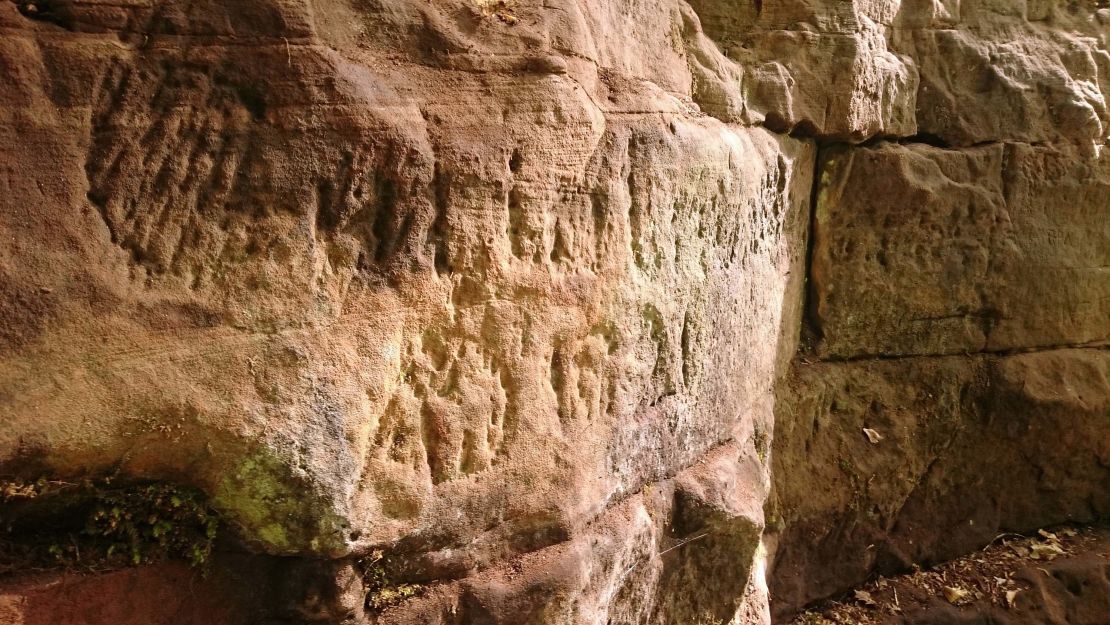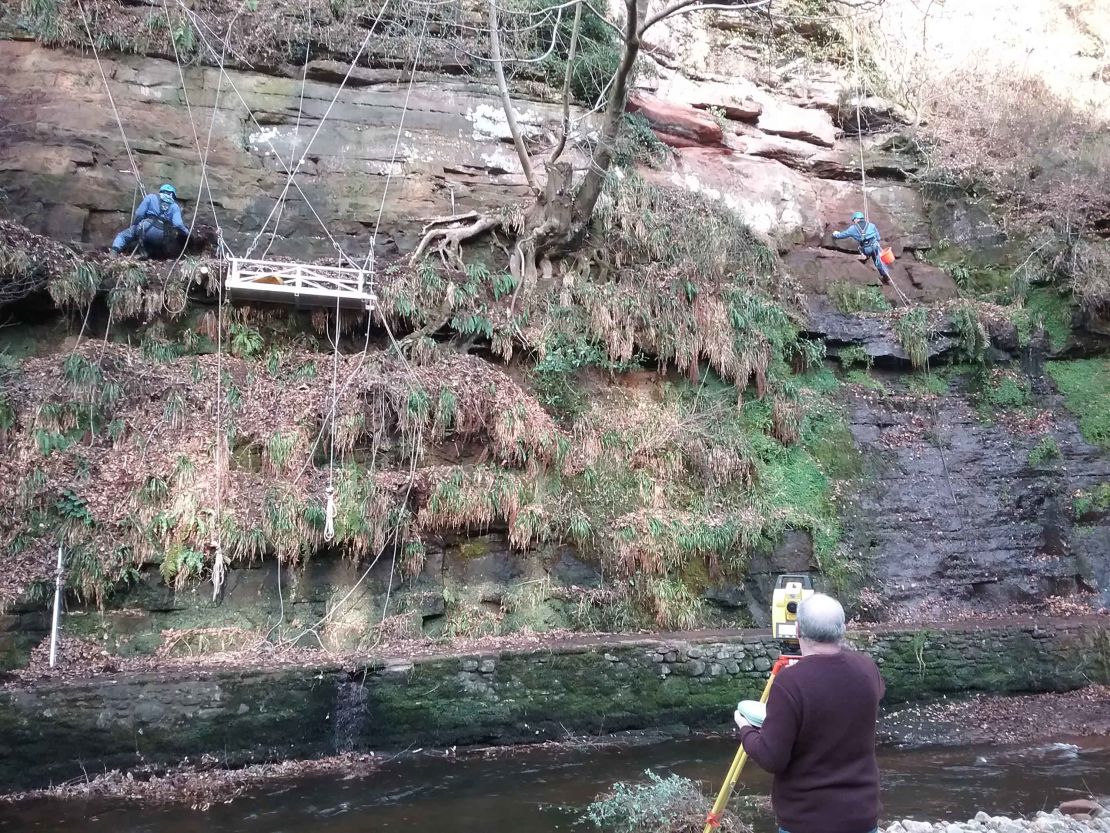While repairing Hadrian’s Wall in the third century, some Roman soldiers amused themselves with a secondary activity: carving explicit graffiti. Now, archaeologists are creating a 3D record of the ancient markings, before they’re lost to erosion.
Hadrian’s Wall, a 73-mile stone frontier barrier stretching across northern England, was completed in A.D. 128 for the Emperor Hadrian. In A.D. 207, the army conducted repairs at Gelt Woods in Cumbria, where they etched words and drawings into a sandstone quarry.

The inscriptions, known as “The Written Rock of Gelt,” were rediscovered in the 18th century. They include a caricature of a commanding officer, as well as names, ranks and military units of some of the soldiers.
Then, of course, there is the R-rated carving, depicting a certain anatomical feature still gleefully doodled on walls today.
According to Rob Collins, lecturer in archaeology at Newcastle University, the phallic inscription isn’t unusual; in fact, he has catalogued 57 other examples along the wall to date. Because the carvings appear similar to the images “boys tend to scribble in textbooks or walls,” he told CNN, “it is easy to project a similar meaning on the Roman examples.”

Phallic etchings, however, had a deeper significance for the Romans. They were “a symbol used to ward off misfortune and bad things in general,” Collins explained. “We know this both from the way in which Romans have written about the phallus relative to ritual and religion, as well as how these symbols are encountered by archaeologists.”
Mike Collins, Historic England’s ancient monuments inspector for Hadrian’s Wall, called the graffiti “the most important on the Hadrian’s Wall frontier,” explaining in a statement: “They provide insight into the organization of the vast construction project that Hadrian’s Wall was, as well as some very human and personal touches.”
The sandstone quarry has fallen victim to erosion, however, risking the loss of the ancient etchings, while the public has been unable to view them since the 1980s after the collapse of a path. But archaeologists from Newcastle University, funded by Historic England, are working to preserve them.

Abseiling 30 feet down the quarry face, the archaeologists are recording the graffiti using a 3D imaging technique known as structure from motion photogrammetry. Later in 2019, the public will be able to view a 3D model of the carvings on Sketchfab, a 3D content-sharing website.
Ian Haynes, professor of archaeology at Newcastle University, said in a statement that the inscriptions are “very vulnerable to further gradual decay,” adding: “This is a great opportunity to record them as they are in 2019, using the best modern technology to safeguard the ability to study them into the future.”



